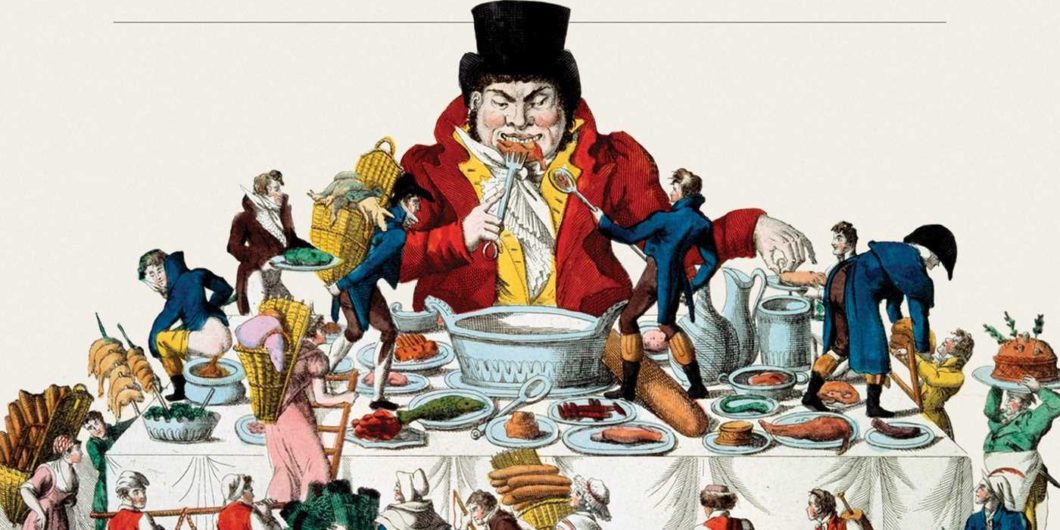In many senses the Evangelical movement has been wildly successful, but today's churches face an unexpected challenge in moral education.
Our Exhausted Age
The day my uncle graduated from college, my grandparents helped him move out of his fraternity house. They walked past a bonfire of studies, where one brother dumped the paper remnants of his education into the flames. As they entered the house, a TV dropped from the second-floor balcony and shattered into pieces on the ground. My grandmother turned to her son and declared, “Christopher, that is decadent!” As in this instance, decadence has connotations of excess sensuality or indulgence to the point of wasteful immorality. When we think of a decadent civilization, we think of Rome becoming so rich and orgiastic that it collapses under the weight of its own sin.
In The Decadent Society: How We Became the Victims of Our Own Success, Ross Douthat reminds us that decline doesn’t always follow that script. Rome lasted 400 years after the orgies and slaughters of Caligula and Nero. Like other empires, such as the Incas, it fell because of unexpected agents from without, not decay from within. More precisely, Douthat writes, decadence means “falling off.” At the end of the 20th century, Jacques Barzun titled his survey of the past 500 years of Western culture From Dawn to Decadence. He explained that the term:
implies in those who live in such a time no loss of energy or talent or moral sense. On the contrary, it is a very active time, full of deep concerns, but peculiarly restless, for it sees no clear lines of advance. The loss it faces is that of Possibility. The forms of art as of life seem exhausted, the stages of development have been run through. Institutions function painfully. Repetition and frustration are the intolerable result. Boredom and fatigue are great historical forces.
Douthat argues that since the 1960s, Americans and Europeans have fallen into decadence. Modern society is ordered around the permanence of progress and expansion, heading ever outward into the frontier. This expansion reached its apotheosis when man walked on the moon and was supposed to continue until humans lived on satellites and colonized Mars. Except, of course, we didn’t. Our society has continued to change, but more in feeling than in fact. We may experience events more quickly, but our art, our politics, and our intellectual life feel stuck. In many aspects of our society, we see “no clear lines of advance.”
Douthat takes Barzun’s definition of decadence and specifies it:
Decadence, deployed usefully, refers to economic stagnation, institutional decay, and cultural and intellectual exhaustion at a high level of material prosperity and technological development. It describes a situation in which repetition is more the norm than innovation; in which sclerosis afflicts public institutions and private enterprises alike; in which intellectual life seems to go in circles; in which new developments in science, new exploratory projects, underdeliver compared with what people recently expected. And, crucially, the stagnation and decay are often a direct consequence of previous development. The decadent society is, by definition, a victim of its own significant success.
The rest of the book is an argument that, despite some signs of vitality and innovation, our society is decadent. Douthat then offers thought experiments about how that decadence could continue indefinitely or be brought to an end.
Markers of Decline
The most difficult part of Douthat’s argument relates to economics and technology. After all, Silicon Valley and Wall Street hardly seem stagnant. Yes, Douthat says, there are outliers like Apple. But much of the tech world is about “disrupting,” not creating, about models and technologies that “almost” work (Elizabeth Holmes’ Theranos, or WeWork) but don’t open up new vistas for advancing how we live and what we make. Our economy continues to grow, but to where it’s been before. In 2017, the median family income reached $60,000—which barely exceeded what it had been in 2007, which in turn barely exceeded what it had been in 1999. The unemployment rate likewise dropped to 4 percent, which it had been in 1999. This is less a story of decline or success than “deceleration followed by stagnation,” which has been with us since the 1960s. Douthat follows Larry Summers and other “less solutionist and more pessimistic” analysts, who claim that the developed world may be entering an age of economic limits. He offers a number of arguments for why the economy can’t return to the growth rates it enjoyed before the 1970s, but his main focus is on technological stagnation. For all it has done, the iPhone has changed our lives less than modern plumbing, the automobile, and the refrigerator.
Douthat’s other markers of decadence are less debatable, least of all the fact that the citizens of the world’s rich countries (except for Israel) are not having enough babies to replace themselves. The decline of fertility is due to various economic and social factors, some known and others not, but Douthat is more interested in why it’s dropped below replacement level. This, he argues, is due to the social revolutions of the 1960s, to which people reacted “by marrying less and divorcing more and having fewer children, more of whom were born outside of wedlock . . . and even—in trends from the last two decades—having less sex, period.” Societies where children aren’t replacing adults become aging populations, which in turn lead to less job creation and innovation, among other things. Sterility is one of the factors contributing to economic stagnation.
As for government, Barzun’s “institutions function painfully” captures 2020 in a nutshell. Our government once won global wars and sent people to the moon; now it can barely pass a budget without shutting down. We’ve come to expect not chaos and disasters at the hands of our leaders, but failure and sclerosis due to ideological polarization and the federal government’s size and scale. But when we look abroad we see similar gridlock in our European neighbors, too. Political sclerosis is not an American problem, but a liberal democratic one more broadly.
Cultural stagnation and repetition were evident in the trailers during this past Super Bowl. In the coming months, the big movies will be the ninth Fast & Furious installment, the twenty-fourth addition to the Marvel Cinematic Universe, and reboots of cultural artifacts from the 1980s and 90s (Mulan, Sonic the Hedgehog, and Top Gun). One could make similar complaints across different genres of music, from opera to hip hop. In 2012, Kurt Anderson argued that “movies and literature and music have never changed less over a twenty-year period” since 1992. The same goes for the world of ideas. Conservative critiques of postmodernism and academic decline haven’t changed much since Allan Bloom. Theological liberalism hasn’t advanced much since post-conciliar Catholicism and its Mainline analogues. Our culture-war debate, Douthat notes, mostly consists of aftershocks from the revolutions of the 1960s and 70s—a scrum that occasionally moves toward new permissiveness (LGBT matters being the biggest shift) but otherwise leaves participants exhausted from staying in the same place.
Much of this is due to the victory of the counterculture, which gained strength from its opposition to a vital old order but never created a new order with the same vitality. A real tension existed between the old ideas and forms and the new counterculture. The old order was a common culture undergirding everything. It allowed the new order to be understood on its own terms and in relation to what went before. People could recognize the counterculture’s critique and experimentation as new and exciting because they knew what it was challenging and remaking. Today’s cultural repetition and recycling comes from “the desire to relive the heroic age of counterculture in a world where the counterculture mostly won, and it’s the attempt to make pastiches and remixes out of a new culture that’s still too shallow and superficial, too weakly rooted, to lend the remix makers what they need.” A vital culture critiques its own robust tradition, Douthat concludes; our decadent culture “just repeats the critique more loudly or crudely or tediously.”
Douthat thinks that this societal stagnation could go on for some time. We tend to think of the internet as an incubator of social ills, a catalyst for sexual deviance and rage. It is that, but the internet also gives us a virtual outlet for our vices. Porn may create more sexual addictions, but it has coincided with fewer sexual assaults. Teenage misbehavior has fallen with the rise of video games and virtual entertainment. There are outliers to this, of course, especially the spike in teenage suicides. Still, he concludes, the internet may be a safety valve for our passions. We shoot and seduce in the fantasy world instead of real life. We form social-media mobs and play-act extremism instead of building real barricades. Our society may be stagnant, but it might be more stable than it looks on Twitter.
Moreover, the external forces that could undermine Western society are not strong enough to take it down. Contra Michel Houellebecq’s thought experiment in Submission, Islam is not a likely replacement for liberal democracy. Marxism won many converts in the intelligentsia as the ideology of the future; mainstream Islam has no such attraction for most Westerners. Muslims in the Middle East and Europe have birth rates that are headed for the same below-replacement levels as the West. Assimilation is a problem in Europe, but Douthat doesn’t think that Islamization will become mainstream or make minorities into majorities. Meanwhile the world’s “illiberal” regimes are either ideologically infertile soft despotisms (Russia) or nationalistic liberal democracies (Hungary). China may be ascendant, but it has its own problems (coronavirus being only one example). Liberalism may be in crisis, but no flourishing replacement exists.
Is There a Solution?
How then could our decadence end? Predictable catastrophes could radically change our civilization, including problems from climate change, unsustainable debts, and an African exodus into Europe. Or our decadence could give way to a new renaissance brought about by a religious revival—maybe even the newfound interest in paganism—or a political shift. But the great lesson of history, Douthat admits, from the discovery of the New World, to the Reformation, to World War I, is that civilizational orders continue until developments arise that could never have been predicted. Our persistent controversies “await some new dispensation to be transcended or resolved.”
There are some places where Douthat’s analysis of stagnation seems unable to account for real changes. The attempt to mainstream the idea that men can give birth is more than a slight ratchet in a stagnant culture war, for example. There is a real shift in thinking about free speech in universities and even at the ACLU. And while internet porn may coincide with a decline in sexual assault, it has real costs in the real world, both for those who make the fantasies and those who suffer when the fantasies warp the dynamic of what is expected in sex.
That said, Douthat’s narrative rings true as a whole and his case for our decadence is persuasive. But Douthat, like the rest of us, has no idea what that dispensation will be that will jar us out of our malaise. This makes The Decadent Society an exercise in the subjunctive mood, a litany of “might” and “would,” a diagnosis with no real prescription. Indeed, the book is an embodiment of its argument—what cultural and political commentary looks like when stagnation sets in and we don’t know how to get out of it. For all its perceptive analysis, it remains unsatisfying, for, like the times it describes, it neither sees nor offers a clear line of advance.



